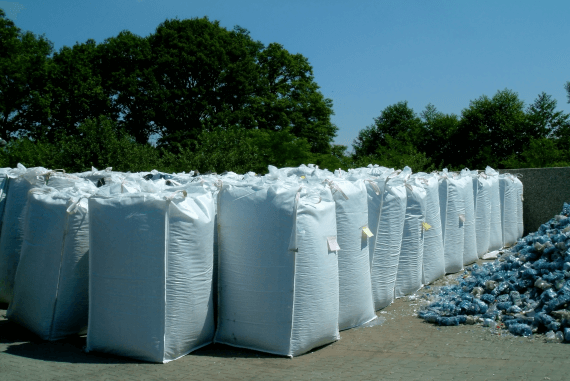- Home ››
- Health and Safety Training ››
- Environmental Health and Safety ››
- Waste ››
- Correct Disposal of Waste
Correct Disposal of Waste

The correct disposal of waste is not only important for environmental preservation and reducing the negative impacts upon it, but also in the prevention of risks to the health and safety of people who may come into contact with any waste which has not been correctly disposed of.
As far as health risks are concerned, these are most likely to come from any sharp objects which may be present in the rubbish such as glass and syringes which can not only cause cuts but can lead to infection if they have contaminated blood or other material on them. This is a particular risk when it comes to the correct disposal of clinical waste for example, as this poses a significant danger to the health and safety of the general public.
The type of waste will obviously play a significant part in how hazardous it is to people or how much of an effect it can have upon the environment. Any hazardous waste will need to be disposed of correctly in a manner which prevents harm to members of the public and conforms with any applicable legislation which exists in the particular country. This legislation will not only be in place to prevent harm coming to people, but will also attempt to prevent damage to the environment and ill-health or death to plant, animal and aquatic life too.
As well as the correct disposal of waste, companies should also put great emphasis upon recycling and improving efficiencies in order to limit the amount which is produced in the first place. Not only will this greatly benefit the environment but it should also bring about financial savings for the company too.
Related Health and Safety Training Course:
The NEBOSH Environmental Certificate is an accredited qualification run over five days which covers a variety of environmental issues including environmental management systems and impact assessments, controls and accident prevention. For more information and to see the course syllabus, please click here.
Safe Storage and Transportation of Waste
The term waste is an extremely general one which can incorporate a wide variety of different substances of varying risk to the health and safety of both the environment and to the health, safety and welfare of organic life including human beings. Waste which is a serious threat to health and safety will require strict controls and procedures, not to mention workers who are sufficiently trained regarding its safe storage and transportation, as well as what to do in the event of an accident or emergency. It is likely that this may require them to attend a number of health and safety training courses which cover different areas such as coshh training and even manual handling training to move it without injury to themselves.
A company needs to ensure that the containers in which the waste is stored are not damaged, either when they are first used or over time if the waste is kept on the premises for an extended period of time as the container can rust or become damaged by other means such as accidental collisions which go unreported. Regular inspections are therefore necessary.
Along with the containers, the areas in which they are stored will also contribute significantly to the safe storage of waste. This area needs to be suitable to protect the containers from being damaged through weather such as rain or being blown over by the wind, and they also need to be secure enough to prevent unauthorised access to the area from trespassers including thieves and children.
Whilst these precautions are intended to prevent such occurrences, provisions should also be made for any accidental spillages and escaping of the hazardous waste material. This can include containment and isolation procedures, as well as comprehensive plans for emergency evacuations and associated functions should a serious situation occur. Just as with other health and safety emergencies such as a fire, having a well-rehearsed and understood plan can be the difference between life and death as having to muddle through in the midst of a disaster can mean things are done slower and sometimes missed completely.
Waste which needs to be transported to be disposed of or treated off site needs to be properly contained and securely held in place on the vehicle to prevent accidental escape into the surrounding environment. It should also be stored in a way which does not put at risk the health and safety of those at the other end who will have to handle and open the containers.
Storage and Identification of Waste and Recycling Material
Increasing the amount of material which is recycled can have tremendous financial benefits for a company as well as helping to prevent further damage to the environment and planet earth. The more material which is recycled means that less needs to be created new from raw materials such as wood, oil (plastics) or minerals which have to be mined and cause a visual scar upon the landscape.
Whilst there is still a long way to go, companies and businesses (as well as individual households) have made tremendous strides over the last decade or so in terms of the amount of recycling which is performed, whether this means using the materials and items again themselves or putting it into a specific recycling bin for collection rather than throwing it out with the general waste which is often sent to landfill. Along with pressure from government and local councils who can issue fines for a failure to put items in the correct bins, an increase in education and awareness has also made people recognise the importance of recycling and reducing the negative impact that the unsustainable over-consumption of raw materials has upon the planet.
One element which is important when it comes to businesses and the amount of recycling that they undertake is the correct storage and identification of waste material and that which is to be recycled. A failure to do this properly can mean that items which can and were intended to be recycled are mistakenly sent off with the general waste to landfill. If this happens it will obviously negate the entire point and effort of separating the recyclables from non-recyclable waste in the first place. Often a simple form of labelling and segregation can be utilised to ensure that mix-ups should not take place and that the different items end up going to where they are supposed to go.
Different materials may also be incompatible with each other and may pose a danger to the health and safety of those in the vicinity if there is a reaction between them. Obviously this has a much greater potential for a disaster than a simple case of accidentally taking a bag of paper to landfill one week or something. Depending upon the material, liquids, substances or whatever it is which make up the items, it may fall under the category of requiring coshh training for staff so that they are aware of the potential dangers and can introduce and enforce suitable control measures to prevent any dangerous reaction from occurring.

